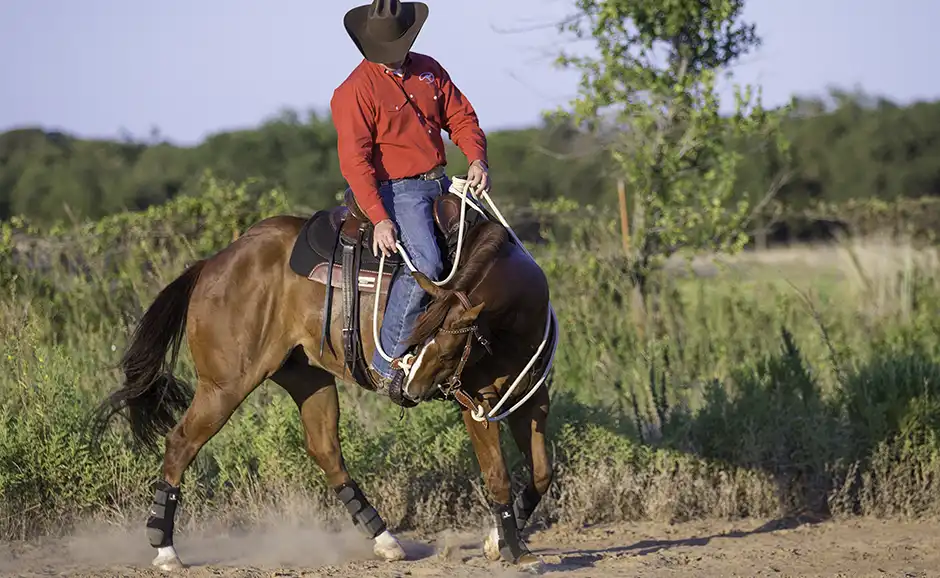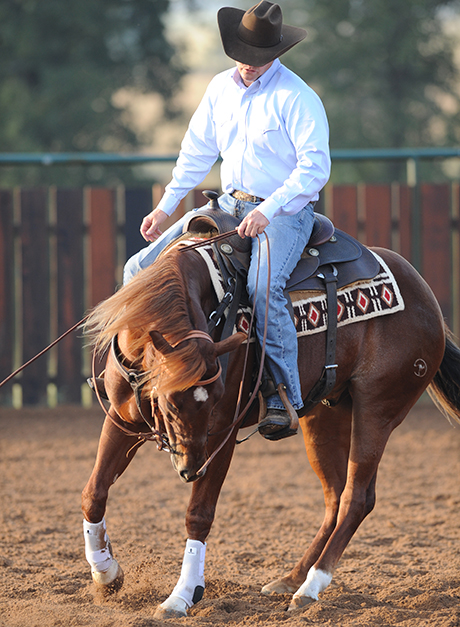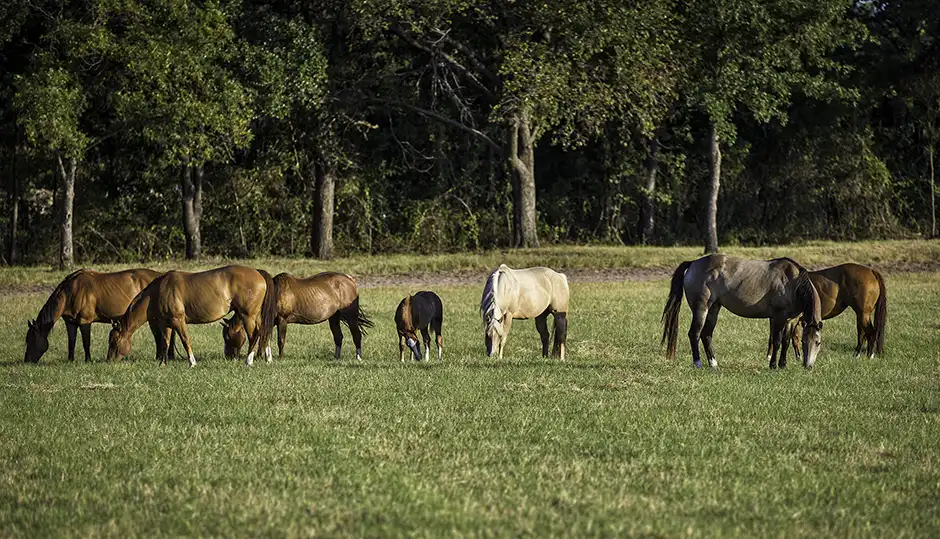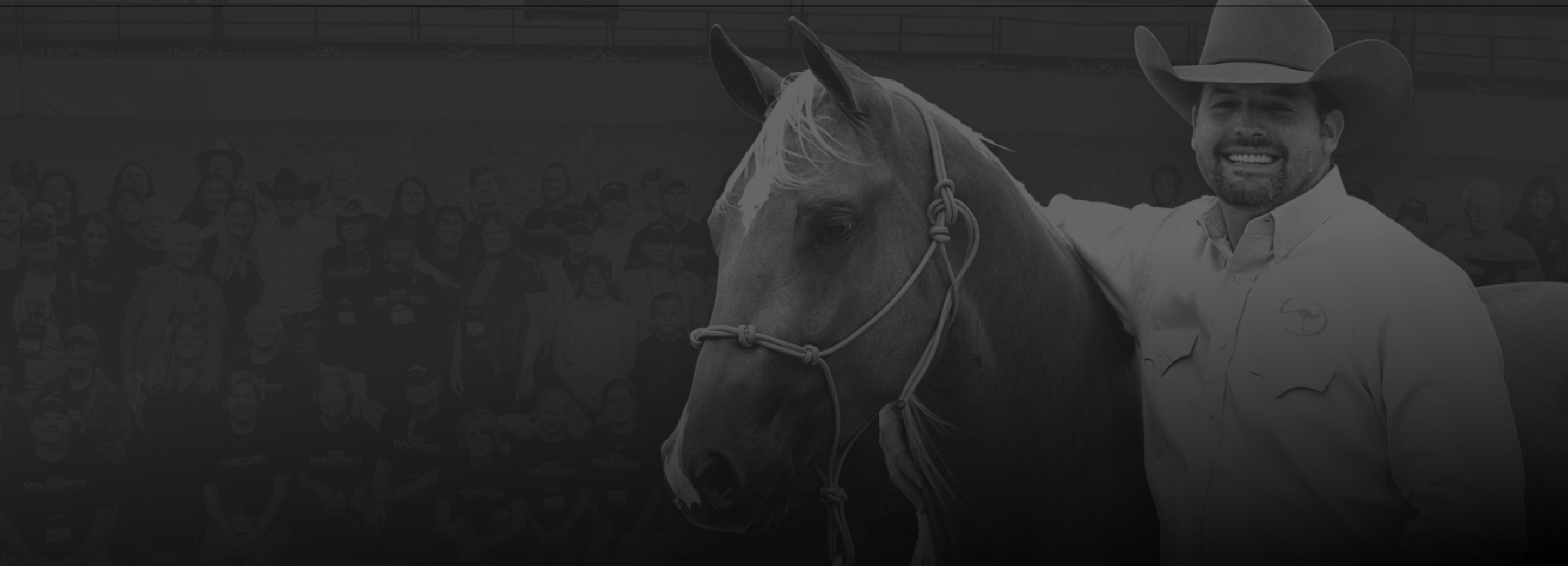Every time you work with your horse, you should act like a detective, trying to figure out where your horse has any holes in his foundation. Here are questions to ask yourself during each training session.
Is your horse light and responsive?
No matter what discipline you do with your horse, it’s important that he’s soft, supple and relaxed in order to perform his best. If he’s stiff throughout his body or braces against pressure, you won’t be able to set him up for specific maneuvers.
Every training session, you should work on softening and suppling his five body parts—his head and neck, poll, shoulders, ribcage and hindquarters. Think of these five body parts like hinges on your horse. In order for you to be able to shape the horse and control his body, these hinges need to be oiled.
If you find a stiff spot in your horse, let that dictate what you work on during your training session. For example, if you’re working on circles and your horse keeps dropping his shoulder into the circle, he’s telling you that you need to focus on shoulder control with him.

Think of your horse’s five body parts like hinges that need to be oiled daily in order to work properly.
Is he better today than he was yesterday?
Each time you work with your horse, you’re looking for him to be a little bit better than he was the day before. In some cases, the improvement will be drastic, but in most cases it’ll be slight. That’s to be expected. Ian Francis always told me to just look for a one-percent improvement from my horses every day. As long as you’re improving by at least one percent, you’re making progress and getting somewhere.
If your horse isn’t making an improvement, it’s a red flag that something isn’t going right in your training program. This is where you have to be experienced enough to diagnose the situation or set your ego aside and get professional help.
Your horse may not be making improvement because your foundation isn’t good enough and you’re asking him to do something he’s not capable of doing. I see this a lot. A person won’t even have taken their horse through the Fundamentals level of the Method, but they’re concerned about their horse not being able to do a flying lead change. That’s like getting frustrated at a kindergartener for not being able to pass a test you’d give to a freshman in high school.
Your ability as a horseman could be holding the horse back. This can be a tough one to face, but it’s important to be honest with yourself. If you have a hot, reactive horse and you can’t get him to relax on a big, loose rein at the canter but you’re not comfortable cantering, your insecurity is likely holding him back. Do what’s best for your horse and get help from a more experienced horseman. Not only will your horse improve, but you’ll add to your own knowledge, too.

Your goal should be to make a one-percent improvement with your horse during each training session.
Is there a crack in the foundation?
Invariably, as you progress in your horse’s training, you’ll happen upon an area that requires you to go back and get your foundation better. Admittedly, this will happen more often at the beginning of your horsemanship journey as you’re working on building your experience. The more horses you work with and the more you add to your knowledge, the better you can get this learning curve down. However, this happens to even experienced horsemen. You’ll think you have something done well, but when you ask the horse for a more advanced maneuver, he’ll let you know you’ve got a hole in your foundation and he needs more help.
There’s no shame in realizing there’s a hole in your foundation and going back and fixing it. The only problem is when your foundation isn’t strong and you ignore it and continue pushing the horse. That isn’t fair to him and it’s just setting him up for failure. When you get into trouble, always go backwards, not forwards.

One of the best things you can do for your horse’s mental health is to turn him out.
How are his mental and physical health?
A good horseman keeps a constant eye on his horse’s mental and physical well-being. Mental well-being refers to his attitude and state of mind. You want your horse to look forward to his training sessions, be interested in what you’re doing, and be relaxed. Now of course there will be times during the training process when you’re challenging the horse or correcting longstanding bad habits, and he may not come out of the barn with a smile on his face. That’s normal. It’s like I tell you, you’ve got to go through some ugly stuff to get to the good stuff.
And some horses, just like some people, are just naturally grumpy and have bad attitudes. There’s not much you can do to help their dispositions. However, if your normally good-minded horse cops a bad attitude or is overreactive, take the time to figure out why. Are you drilling too much on particular exercises and boring him to death? While it’s important to be consistent with your training, you also have to be sure to include variety in your program. Are you pressuring him too much or progressing too quickly for him? You need to step back and assess the situation and figure out why your horse’s behavior has changed and what you need to do to correct the situation.
Horses are much happier when they’re turned out and can interact with other horses. If your horse is locked in a stall 23 hours a day and can’t see other horses, it could be affecting his mental well-being. The more you confine a horse and don’t give him the opportunity to socialize and interact with other horses, as he normally would do in a herd, the more uncomfortable he feels. Mother Nature intended horses to constantly be on the move, interacting with each other. Taking them out of their natural state creates stress in their lives. A lot of horses deal with that stress by developing a stall vice—weaving, cribbing, etc. That vice is their attempt to stimulate their minds and give themselves something to do.
Horses are the most content if they can touch other horses, be near them or at least see them. I’ve noticed that with turnout my horses are happier and seem to enjoy their lives much more. They have an overall better attitude when it comes to their work and their training progresses at a quicker rate.
Every day you ride your horse, you should assess his physical health. How is his body condition? Do you need to up or lower his calorie intake? I always tell people, ride the horse, not the feed. It’s important that your horse’s nutritional needs are met but it’s also important that you’re not overfeeding him and causing him to be high strung and overreactive. On the other end of the scale, you need to make sure he’s receiving enough feed to be in good health and spirits.
Does he appear to be stiff or sore anywhere? If so, address it immediately before a minor issue turns into a career-ending or life-threatening injury. If you expect your horse to perform well for you, you must give him the best care that you can.

Every day, you should assess your horse’s physical condition and decide whether you need to make any changes in his diet.

Master Your horsemanship Skills
Like these tips? Join the No Worries Club and hone your skills with thousands of hours of Clinton’s easy, step-by-step method horse training videos.



